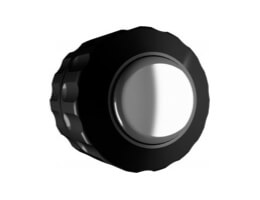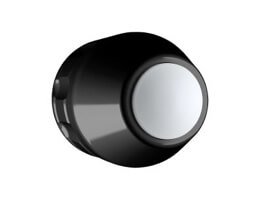Creating a non-drug option and preventing dependence on opioids
Imagine enduring persistent, widespread pain with no apparent end in sight. This is the reality for those grappling with fibromyalgia—a complex condition marked by chronic pain, fatigue, and various symptoms that profoundly disrupt daily life. Individuals with fibromyalgia often face heightened sensitivity to pain, termed hyperalgesia, and may also experience allodynia, where ordinarily non-painful stimuli provoke pain sensations. This multifaceted disorder significantly diminishes quality of life, presenting physical and emotional hurdles for those affected.

Fibromyalgia, commonly spelled “fibromyalgia,” affects individuals across all age groups, including children, though it’s most frequently diagnosed in adults. Predominantly impacting women, fibromyalgia can also afflict men. Symptoms include widespread musculoskeletal pain, fatigue, sleep disturbances, memory impairment, and mood fluctuations. Current estimates suggest that approximately 2-4% of the population grapples with fibromyalgia, with its prevalence rising with age.
While managing fibromyalgia poses a challenge, a recent randomised controlled trial using radial shockwave therapy is showing promise. Shockwave therapy is a non-invasive treatment modality that utilises acoustic waves to target areas of pain and dysfunction in the body. These shockwaves stimulate the body’s natural healing processes, promoting tissue regeneration, increased blood flow, and pain relief.
In the context of fibromyalgia, radial shockwave therapy offers a promising approach to managing chronic pain by potentially modulating pain sensitivity and improving overall function with no adverse effects.
Shockwave therapy and fibromyalgia and its effect on pain, blood markers, imaging, and participant experience – a multidisciplinary randomized controlled trial
In this multidisciplinary study by Sanzo et al (2024), researchers investigated the effects of shockwave therapy on pain levels but also explored the effect on blood markers, imaging results, and the personal experiences of those undergoing this non-invasive treatment.
Participants:
-
- Inclusion criteria: Individuals aged 18-60 diagnosed with fibromyalgia based on ACR Diagnostic Criteria 2010, willing to provide informed consent, and able to speak and read basic English
- Exclusion criteria: Participants with conditions that could explain their pain, implanted metal incompatible with MRI or shockwave therapy, pregnancy, thrombosis, thrombophlebitis, or coagulation disorders
- Control group: Healthy Control participants
Criteria:
-
- Prospective Fibromyalgia participants recruited from Jan 2017 to Feb 2018
- Recruitment based on age, diagnosis, consent, and language proficiency
- Exclusion of participants with specific medical conditions
Treatment Protocol:
- Randomised allocation of eligible participants to treatment or placebo groups.
- Treatments were administered using a Storz Medical D-Actor 100.
- Treatment group: Received Radial Shockwave Therapy (RSWT); n=7
- Placebo group: Received placebo treatment; n=6
- Intervention completion by all participants as per allocated group
Outcome Measures:
- Pain assessment using Visual Analog Scale (VAS)
- Hypermobility evaluation using Beighton Scoring Screen
- Pain Catastrophizing Scale scores
- Changes in blood biomarker analysis
- Qualitative assessment of participant experiences
- Data analysis using t-tests and Mann-Whitney U tests for comparisons
Summary of Findings:
The key findings of this study regarding the effectiveness of radial shockwave therapy on pain management in fibromyalgia patients indicated the following:
- Pain Reduction: Participants who received Radial Shockwave Therapy (RSWT) showed improvements in pain levels compared to the placebo group. While there were no statistically significant differences in some pain-related measures, the Visual Analog Scale (VAS) scores demonstrated clinically significant changes with improved pain scores in the RSWT group.
- No Negative Effects: The implementation of RSWT was reported to be safe, with no negative treatment effects observed or reported by the participants. This suggests that shockwave therapy can act as a pain modulator to reduce sensitivity in individuals with fibromyalgia.
- Qualitative Feedback: Post-treatment surveys revealed positive pain and symptom improvements among participants who underwent shockwave therapy. The experiences shared by participants offered hope and potentially highlighted the subjective benefits of this treatment approach.
Conclusion:
Overall, the study’s findings suggest that shockwave therapy may hold promise as a non-invasive and safe intervention for managing pain in individuals with fibromyalgia.
By introducing shockwave therapy in management for fibromyalgia, individuals living with this condition may have access to a novel and effective intervention that could alleviate pain, enhance mobility, and improve their overall well-being. Further research and clinical studies are essential to explore the full scope of benefits that shockwave therapy may offer in the comprehensive management of fibromyalgia symptoms.
Reference:
Sanzo, P., Agostino, M., Fidler, W., Lawrence-Dewar, J., Pearson, E., Zerpa, C., Niccoli, S. and Lees, S.J., 2024. Shockwave therapy and fibromyalgia and its effect on pain, blood markers, imaging, and participant experience-a multidisciplinary randomized controlled trial. Physiotherapy Theory and Practice, pp.1-16.
Our Radial Protocol for Fibromyalgia
Treatment should be administered at high frequency but low bar. The goal is not to induce changes within the tissue structure but rather to desensitise nerves while actively avoiding flare-ups.
Five treatments (one week apart over a 5-week period) to the three most painful areas.
500 shocks at 1.5 bar and 15 Hz, then 1000 shocks at 2 bar and 8 Hz, and finally 500 shocks at 1.5 bar and 15 Hz.






